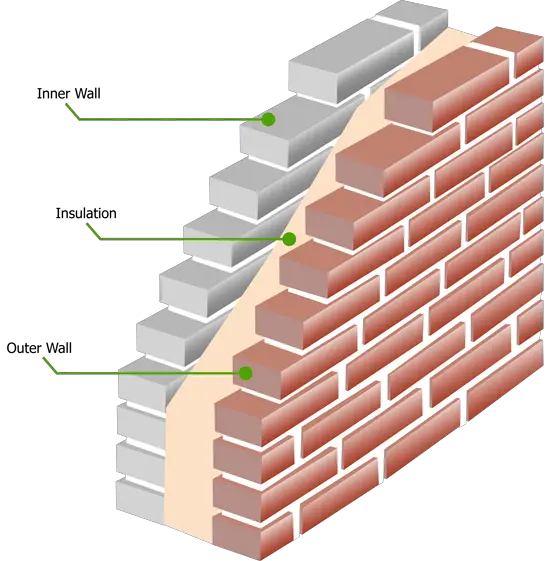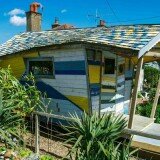Double Brick Cavity Walls – Perfect Insulation
Thermal insulation is a must these days as long as we are about the everyday comfort, regardless of the season, and the low maintenance costs. The most accessible way of insulating walls is using polystyrene sheets, but the construction techniques have much evolved and offer new alternatives. The double brick walls is one of them, boasting a high efficiency which results in lower bills both in summer and winter.
In double brick, the two leaves of brick walls are separated by a cavity that reduces thermal transmission and prevents moisture being transferred directly from the outside wall face to the interior of the building. The internal leaf, or skin, may be plasterboard-lined concrete blockwork, with the external skin in facing brick. The leaves of double brick are joined with ties.
The most effective option for insulating double brick walls is to use a pump-in loose-fill wall insulation. This product is installed by drilling holes in the wall between the bricks and pumping the insulation into the existing wall cavity. When the work is completed, the holes are filled with mortar.

Double Brick Cavity Walls – A Slice Of The Wall
There are many types of loose-fill insulation on the market, including specially treated (hydrophobic) granulated rock wool and specially treated cellulose fibre, which fill the gap between the brickwork. You can also consider polyurethane foam, which expands after being pumped into the wall cavity.
There are a number of different ways to install insulation between double brick walls. In some houses it is possible to lift roof tiles and gain access to the top of the wall cavity. In this case, a hose is dropped down into the wall cavity and the wall filled from the bottom up. In houses with metal roofs, sheets of tin might need to be lifted to gain access to the wall cavity, but this is more costly.
If it is not possible to install insulation through the roof, the insulation installer will drill holes through the mortar between bricks (usually the corners of the bricks get drilled out a bit as well) or remove a whole brick to fill the cavity. The holes are then filled with mortar, and the bricks replaced.
Sources: Sustainability.vic.gov.au, Yourhome.gov.au















